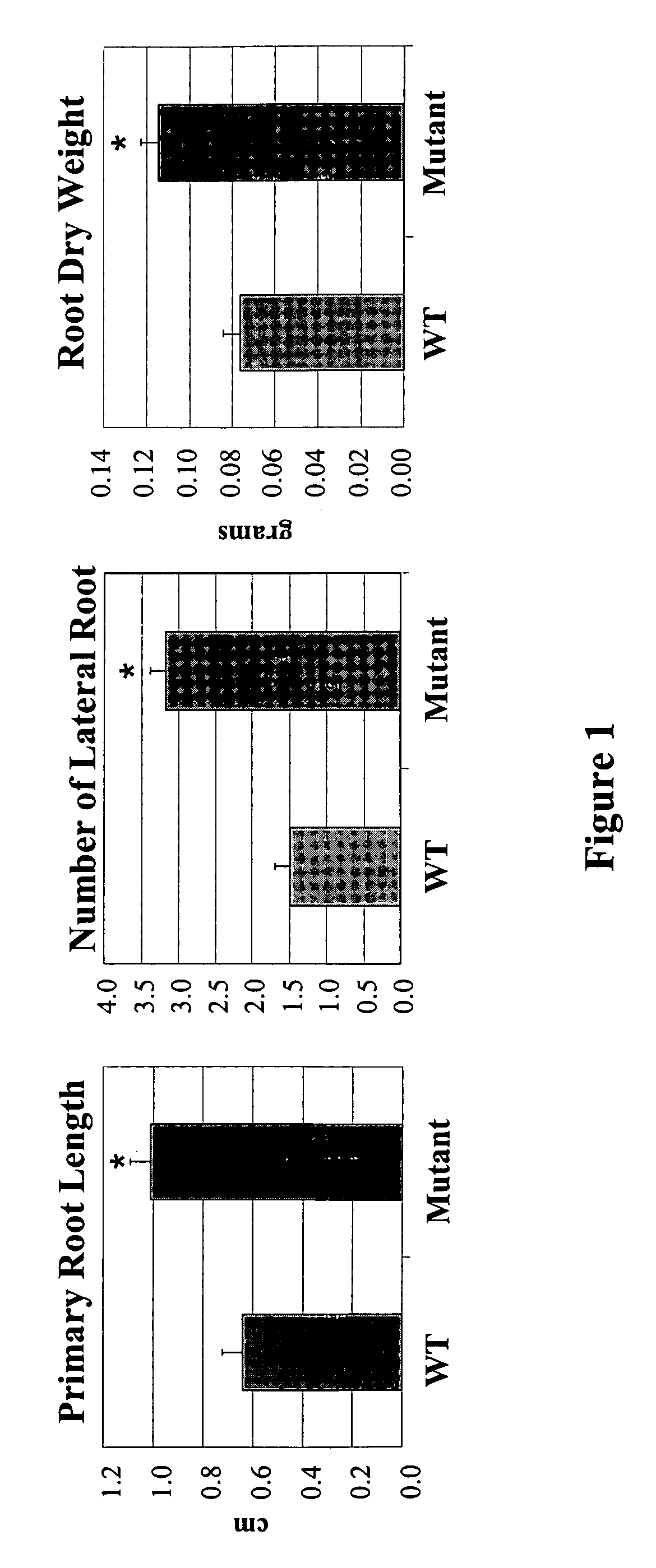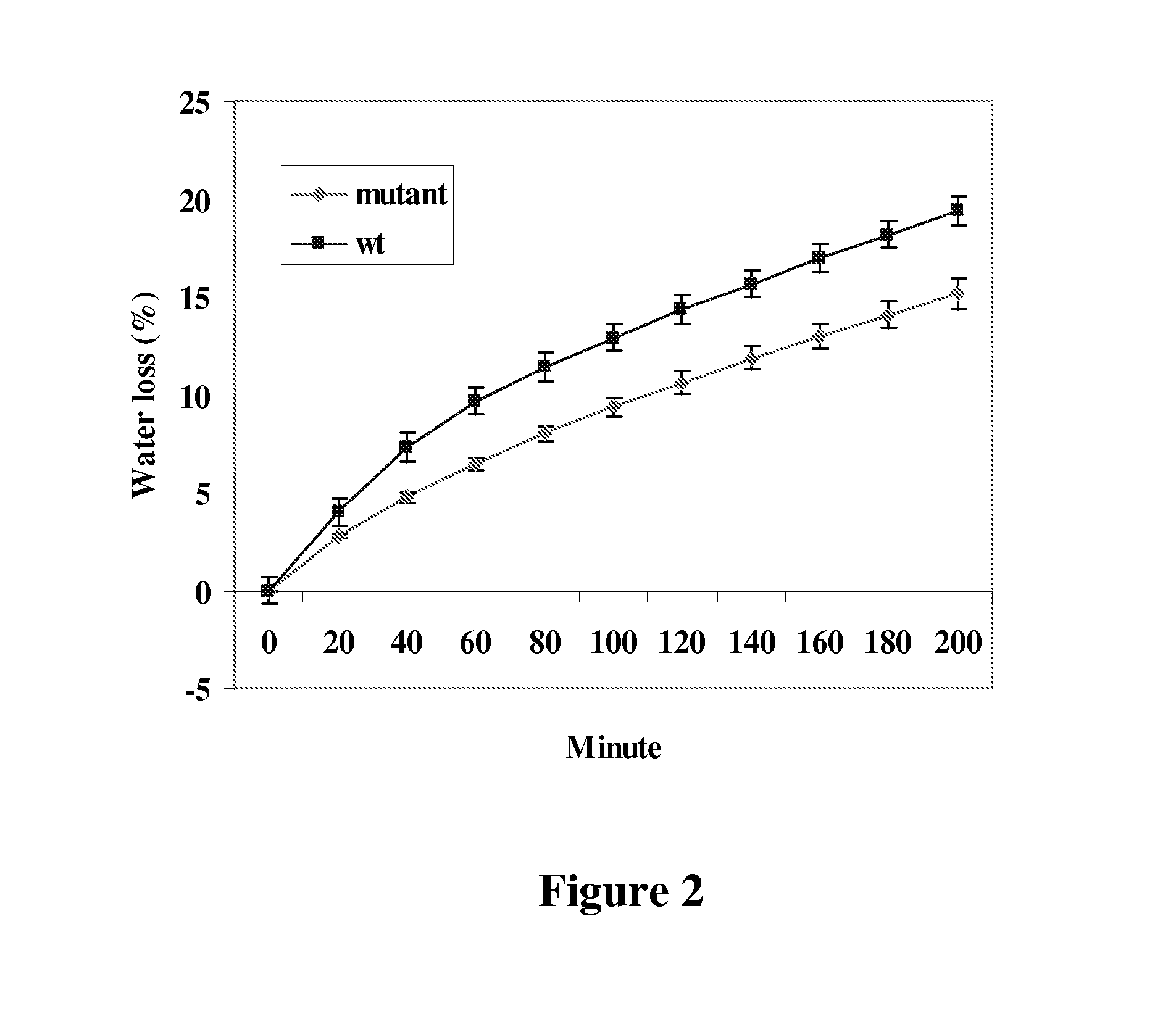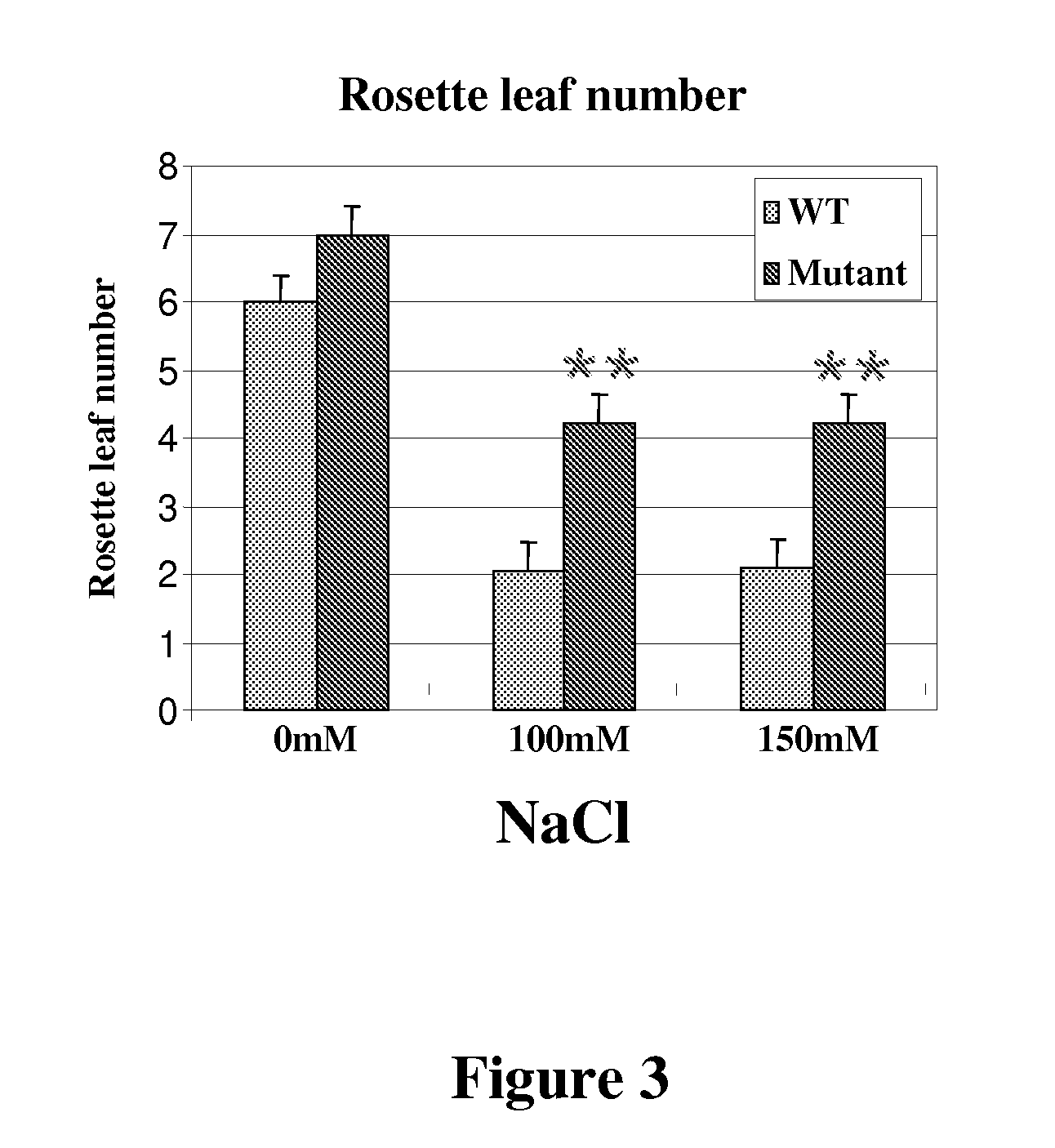Nucleotide sequences and method of using same to increase plant stress tolerance
a plant stress and nucleotide sequence technology, applied in the field of gene engineering, can solve the problems of huge yield loss, increased stress, and loss of entire crop yield, and achieve the effect of improving stress toleran
- Summary
- Abstract
- Description
- Claims
- Application Information
AI Technical Summary
Benefits of technology
Problems solved by technology
Method used
Image
Examples
example 1
The Screening, Phenotypic Characterization of the Gain-of-function Mutant
[0086]For isolating the gain-of-function mutant, the inventor generated an Arabidopsis thaliana T-DNA activation tagging mutant library of ˜55000 independent lines with use of the T-DNA mutagen pSKI015 an activation-tagging vector having the CaMV35S enhancers and the Bar gene which confers Basta resistance for selection. (Weigel et al., 2000. Activation tagging in Arabidopsis. Plant Physiol. 122:1003-13.). Briefly, wild-type Columbia plants were transformed by the floral dip method. About 120 grams of T1 seeds were bulk produced, and a transformation frequency of about 1% was achieved. The bulk seeds were selected for herbicide resistance in soil with 0.2% commercial glufosinate ammonium herbicide and screened for individuals with increased growth vigor. A few such putative mutants were isolated, and their offspring were later tested for their tolerance to drought stress. T2 seeds were collected as individual p...
example 2
Drought Tolerance Assay for the Gain-of-function Mutant
[0092]1. Comparison of the Response to Drought Stress Between the Wild Type and the Mutant Seedlings
[0093]Mutant hs1 seedlings showed improved drought tolerance compared with wild-type seedlings and better recovery upon re-watering after severe drought stress. Under the same growth conditions, wild-type seedlings showed wilting symptom about 4 days earlier than the mutant seedlings. After drought stress (without watering) for two weeks, nearly 100% of the mutant seedlings were still alive, while none of the wild-type seedlings were.
[0094]To genetically characterize the mutant, the wild-type Columbia as the female parent was crossed with the heterozygous mutant as the male parent. F1 progeny were examined for herbicide resistance and drought tolerance. A 1:1 segregation ratio (Table 2) indicates that the drought-tolerance trait was stably inherited in a Mendelian fashion and determined by a single dominant locus that co-segregate...
example 3
Response of the Mutant to Salt Stress in Contrast to the Wildtype
[0106]The mutant and the wild type are cultivated in the same tray under same growth conditions. Four weeks later salt stress was imposed by watering 0.2M NaCl solution. After 18 days salt stress, the salt stress phenotype was observed, where the wild type died and the mutant continued to grow. This demonstrates that the mutant has improved tolerance to salt stress, too.
[0107]The mutant and the wild type seeds were germinated on MS medium without salt. One week later, the seedlings were transferred to the medium containing 100 mM and 150 mM NaCl and let them continue to grow. The leaf number (as an indicator of continued growth under salt stress) was counted. The leaf number of the mutant is higher than that of the wild type under salt stress. (“wt” refers to wild type).
PUM
| Property | Measurement | Unit |
|---|---|---|
| Tm | aaaaa | aaaaa |
| pH | aaaaa | aaaaa |
| molecular mass | aaaaa | aaaaa |
Abstract
Description
Claims
Application Information
 Login to View More
Login to View More - R&D
- Intellectual Property
- Life Sciences
- Materials
- Tech Scout
- Unparalleled Data Quality
- Higher Quality Content
- 60% Fewer Hallucinations
Browse by: Latest US Patents, China's latest patents, Technical Efficacy Thesaurus, Application Domain, Technology Topic, Popular Technical Reports.
© 2025 PatSnap. All rights reserved.Legal|Privacy policy|Modern Slavery Act Transparency Statement|Sitemap|About US| Contact US: help@patsnap.com



